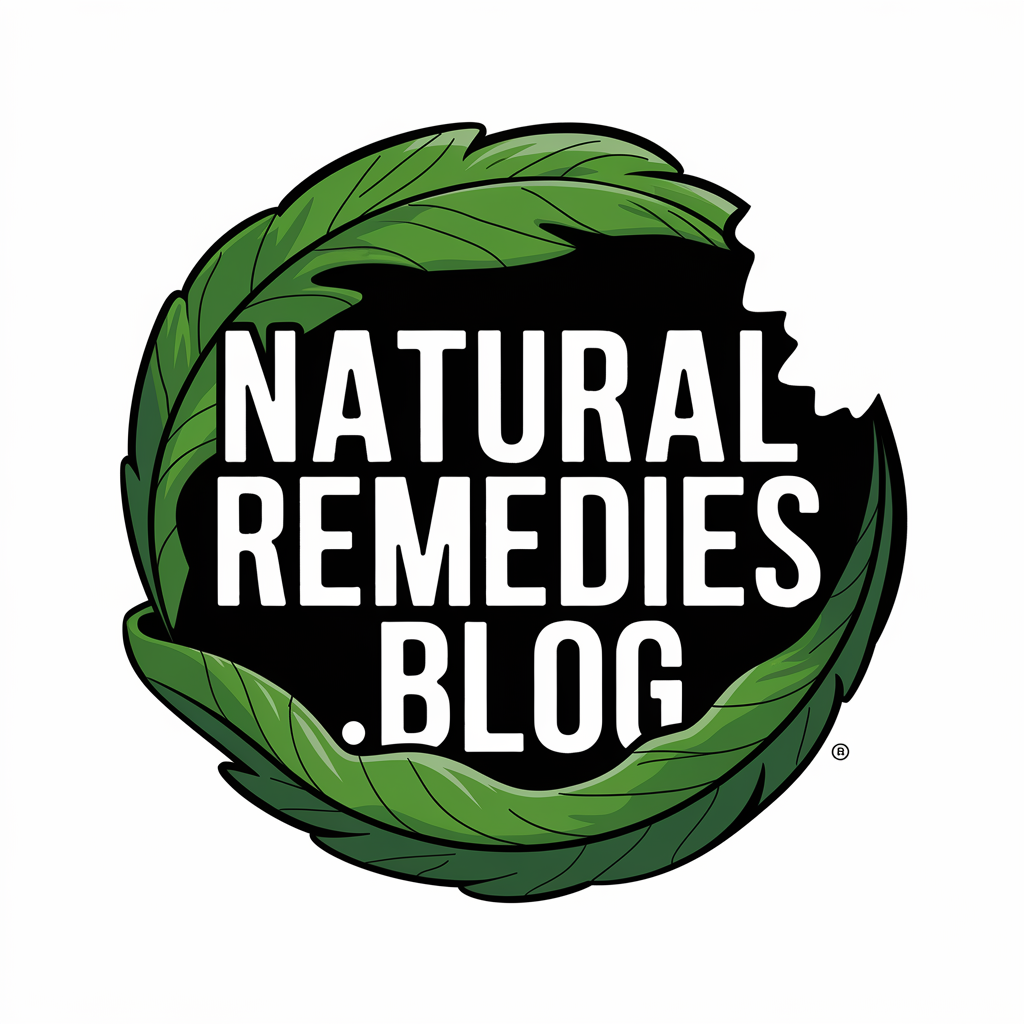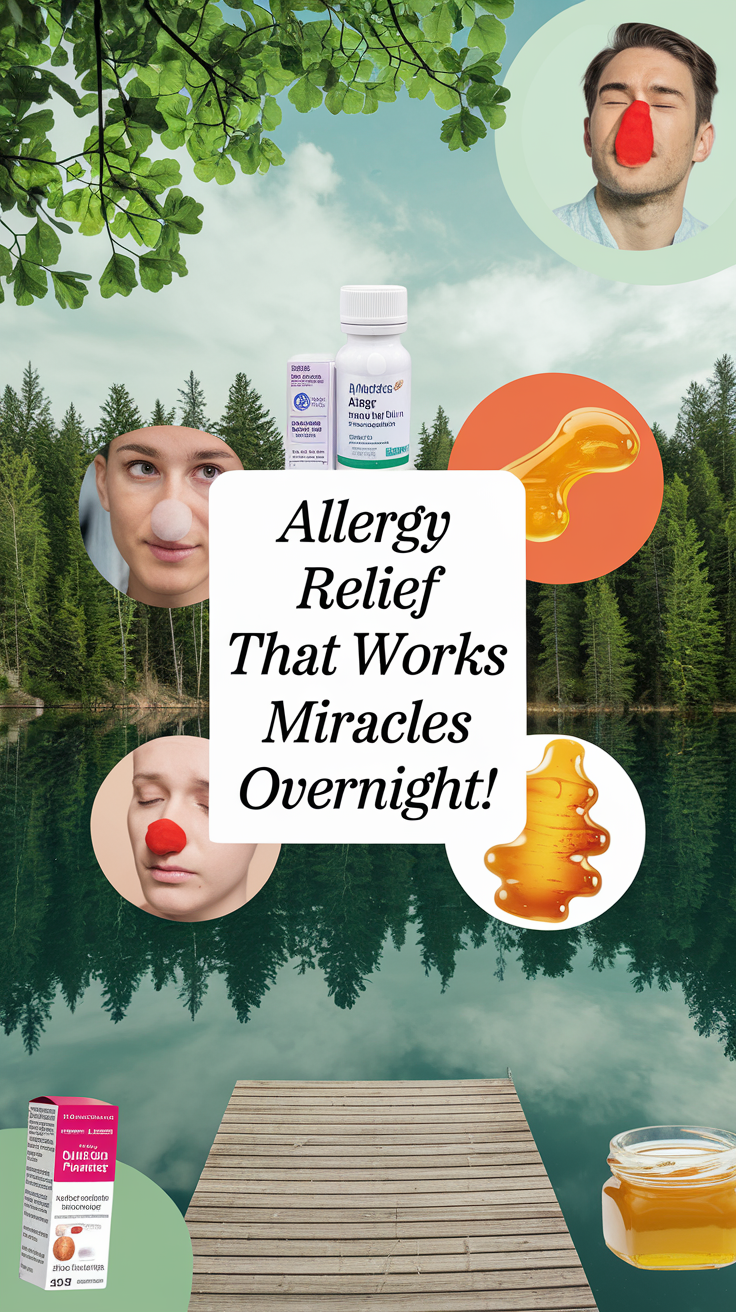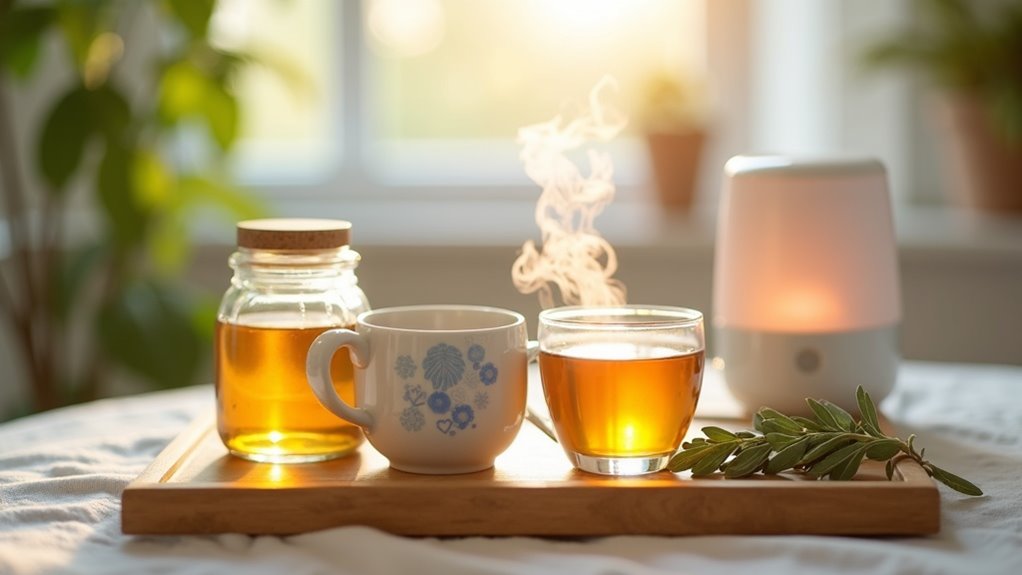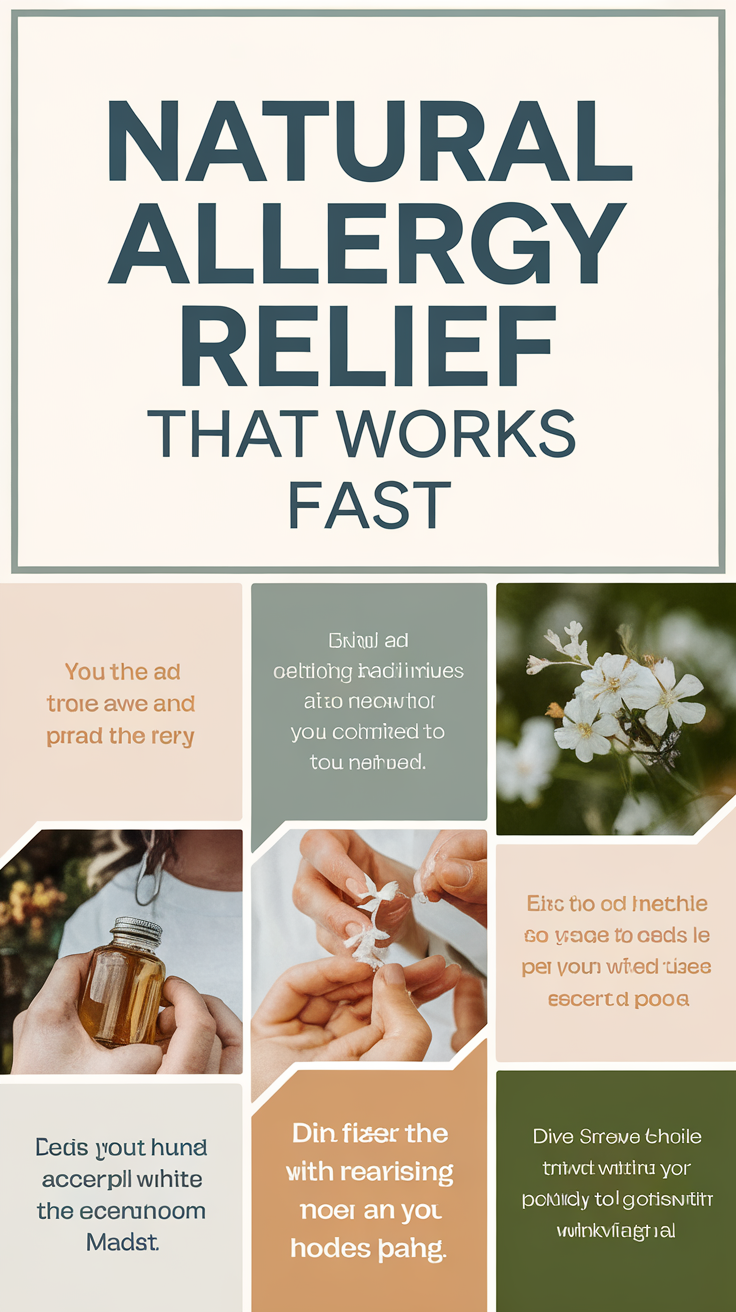Allergy Relief That Works Miracles Overnight!
You can transform your nights from allergy misery to peaceful sleep with a multi-pronged approach. Start by using a neti pot before bed, adding an air purifier with HEPA filter to your bedroom, and protecting your bed with hypoallergenic covers. Essential oils like lavender and eucalyptus can ease breathing, while natural antihistamine foods boost your body’s defenses. Discover how these strategies work together to create your perfect allergy-fighting nighttime routine.
Key Takeaways
-
Use a combination of antihistamine medication and nasal corticosteroid spray before bed for maximum overnight symptom relief.
-
Create an allergen-free sleep environment with hypoallergenic bedding and HEPA air purifiers in the bedroom.
-
Perform nasal irrigation with saline solution before bedtime to flush out allergens and reduce nighttime congestion.
-
Diffuse lavender and eucalyptus essential oils in the bedroom to clear airways and promote better breathing during sleep.
-
Elevate your head while sleeping to reduce blood flow to nasal passages and minimize nighttime congestion.
Understanding Common Allergy Triggers
While millions of people suffer from allergies year-round, knowing what triggers your symptoms is the first step toward finding relief. You’re not alone in dealing with common triggers like pollen, dust mites, pet dander, and mold spores that can make daily life challenging.
You’ll find that seasonal changes often intensify your symptoms, especially during spring when trees release pollen and fall when ragweed blooms.
Indoor triggers can affect you throughout the year, making your home a potential source of discomfort. The good news is that once you identify your specific triggers, you can better target your allergy remedies and create an effective management plan.
Keep a symptom diary to track when and where your allergies flare up, helping you pinpoint exactly what sets them off.
The Science Behind Overnight Allergy Relief
Once you’ve identified your allergy triggers, understanding how your body reacts overnight can help you find lasting relief.
During sleep, your immune system releases histamines to fight perceived threats, which can worsen your symptoms between 4 AM and 6 AM. That’s why you might wake up congested or sneezing.
Your body’s natural cortisol levels are lowest at night, making allergy symptoms more noticeable. Additionally, lying down increases blood flow to your nasal passages, leading to more congestion.
When you’re sleeping, you’re also exposed to dust mites, pet dander, and other allergens that collect in your bedding.
Taking an antihistamine before bed, using allergen-proof covers, and keeping your bedroom humidity below 50% can greatly reduce overnight reactions and help you wake up feeling refreshed.
Essential Oil Solutions for Peaceful Sleep
Several essential oils offer natural relief from nighttime allergy symptoms while promoting restful sleep.
You’ll find lavender particularly effective, as it naturally calms your airways and soothes your mind. Eucalyptus and peppermint oils work wonders to clear nasal passages and reduce inflammation, helping you breathe easier throughout the night.
To join the growing community of natural remedy enthusiasts, try adding 3-4 drops of your chosen oil to a diffuser beside your bed. You can also create a gentle chest rub by mixing these oils with coconut oil.
For those who prefer a more direct approach, sprinkle a few drops on your pillowcase or add them to a warm, pre-bedtime bath. Remember to always dilute essential oils properly to avoid skin sensitivity.
Bedroom Modifications for Allergy-Free Nights
Beyond natural remedies, creating an allergy-resistant bedroom environment makes a significant impact on your sleep quality.
Start by installing hypoallergenic pillowcases and mattress covers to protect against dust mites, pet dander, and pollen. You’ll want to wash your bedding weekly in hot water to eliminate allergens that accumulate overnight.
Consider investing in a high-quality air purifier with a HEPA filter to capture airborne particles, and keep your bedroom humidity between 30-50% using a dehumidifier.
Remove carpeting if possible, or vacuum regularly with a HEPA-filtered vacuum. Keep pets out of your sleeping space, and place indoor plants that naturally purify air in your room.
Finally, maintain a clutter-free space to minimize dust-collecting surfaces, making your bedroom a true sanctuary for restful sleep.
Powerful Natural Antihistamine Foods
While medication can provide quick relief, incorporating natural antihistamine foods into your diet offers a sustainable way to fight allergies.
You’ll find powerful allies in quercetin-rich foods like onions, apples, and berries, which help stabilize your body’s histamine response. Add vitamin C-packed citrus fruits and bell peppers to boost your immune system naturally.
Don’t forget to include anti-inflammatory powerhouses like turmeric, ginger, and green tea in your daily routine. These foods work together to reduce your allergy symptoms from the inside out.
Make sure you’re getting enough garlic and pineapple too – they’re packed with compounds that help break down mucus and reduce swelling. By making these foods regular staples in your meals, you’ll join countless others who’ve found natural relief from seasonal allergies.
Air Purification Strategies That Work
In addition to dietary changes, keeping your air clean can dramatically reduce allergy symptoms. You’ll breathe easier by implementing proven air purification methods that target common allergens in your home.
| Strategy | Benefits | Cost Level |
|---|---|---|
| HEPA Filters | Removes 99.9% of particles | Medium |
| Regular Dusting | Reduces surface allergens | Low |
| Air-Purifying Plants | Natural filtration | Low |
| Dehumidifiers | Controls mold growth | Medium |
| UV Light Systems | Kills airborne bacteria | High |
Start by placing HEPA filters in your bedroom where you spend the most time. Keep humidity levels between 30-50% to prevent mold growth, and don’t forget to clean or replace filters monthly. Adding air-purifying plants like snake plants or spider plants provides an extra layer of natural filtration while beautifying your space.
Herbal Teas for Respiratory Relief
Nature’s healing power shines through specific herbal teas that can ease your respiratory discomfort and allergic reactions.
You’ll find relief with nettle tea, which naturally blocks histamine production and reduces inflammation. Butterbur tea works similarly to antihistamine medications, while ginger tea helps break up chest congestion.
For immediate comfort, try peppermint tea – it’s a natural decongestant that opens your airways and soothes throat irritation.
Green tea’s antioxidants fight allergic responses, and chamomile tea calms both your airways and your mind.
Licorice root tea coats your throat and reduces coughing, while elderberry tea boosts your immune system to fight allergic triggers.
Add honey to any of these teas for extra throat-coating benefits and enhanced healing properties.
HEPA Filters and Their Impact
High-efficiency particulate air (HEPA) filters stand as your strongest defense against airborne allergens in your home.
These powerful filters capture 99.97% of particles as small as 0.3 microns, including pollen, dust mites, pet dander, and mold spores that trigger your allergies.
You’ll notice the biggest impact when you place HEPA filters in your bedroom, where you spend roughly one-third of your day.
By running an air purifier with a HEPA filter while you sleep, you’re creating a clean-air sanctuary that lets you wake up feeling refreshed instead of congested.
Consider adding HEPA filters to your vacuum cleaner and home HVAC system too – they’ll work together to keep your entire living space virtually allergen-free, helping you breathe easier throughout the day.
Dehumidifier Benefits for Allergy Sufferers
While HEPA filters tackle airborne particles, dehumidifiers target another major allergy trigger – excess moisture. You’ll notice a significant difference in your home’s comfort level when you maintain ideal humidity levels between 30-50%. Dehumidifiers help prevent mold growth, dust mite proliferation, and other moisture-loving allergens that can wreak havoc on your respiratory system.
| Humidity Level | Effects on Health | Common Allergens | Solution |
|---|---|---|---|
| Above 60% | Respiratory issues | Mold spores | Run dehumidifier |
| 50-60% | Mild discomfort | Dust mites | Monitor levels |
| 30-50% | Ideal breathing | Minimal growth | Maintain range |
| Below 30% | Dry airways | Static electricity | Add moisture |
Nasal Irrigation Techniques
Beyond managing your home’s air quality, clearing your nasal passages directly offers powerful relief from allergies.
You’ll join countless others who’ve discovered the ancient practice of nasal irrigation, a technique that’s become increasingly popular among allergy sufferers.
Using a neti pot or saline rinse bottle, you can gently flush out allergens, mucus, and irritants from your nasal cavity.
Mix 1/4 teaspoon of non-iodized salt with 8 ounces of warm distilled water. Lean over a sink, tilt your head sideways, and pour the solution into your upper nostril, letting it drain through the lower one.
Repeat on the other side.
For best results, perform this cleansing ritual once or twice daily, especially after outdoor exposure.
You’ll soon notice clearer breathing and reduced allergy symptoms, just like many others in our allergy-relief community.
Over-the-Counter Medicine Guide
Three main categories of over-the-counter allergy medications can help you manage your symptoms effectively.
Antihistamines like Benadryl and Zyrtec block the histamine that causes your sneezing and itching. You’ll find these helpful for immediate relief, especially when your symptoms flare up.
Decongestants such as Sudafed work by shrinking swollen blood vessels in your nasal passages, helping you breathe easier. Just remember they’re not recommended for long-term use.
The third category, nasal corticosteroids like Flonase, reduces inflammation and mucus production – they’re perfect for daily prevention.
For best results, you might want to combine these medications based on your symptoms. Many allergy sufferers find success using an antihistamine with a nasal spray for thorough relief.
Salt Therapy and Its Effects
Natural remedies offer another path to allergy relief, with salt therapy emerging as a promising option. You’ll find two main approaches: halotherapy in salt caves or rooms, and nasal irrigation using saline solutions. Both methods can help clear your airways and reduce inflammation.
When you visit a salt therapy room, you’ll breathe in tiny salt particles that can reach deep into your lungs, helping to break up mucus and reduce irritation. You’re joining a community of wellness-seekers who’ve discovered this ancient practice.
At home, you can use a neti pot or saline spray to flush out allergens and irritants from your nasal passages. Many allergy sufferers report feeling immediate relief after salt therapy, with benefits lasting several days to weeks.
Bedding Materials That Reduce Allergens
While standard bedding can harbor countless allergens, choosing the right materials for your bed can greatly reduce your exposure to dust mites, pollen, and other irritants.
You’ll want to invest in hypoallergenic pillowcases and mattress covers made from tightly woven microfiber or organic cotton. These materials create a barrier that keeps allergens from settling into your bedding.
Don’t forget to look for washable materials that can handle hot water (130°F or higher), as this temperature effectively kills dust mites.
Consider bamboo sheets, which naturally resist bacteria and dust mites, or silk pillowcases that repel allergens.
For comforters and duvets, choose those filled with hypoallergenic materials like down alternatives or specially treated natural down that’s been certified as hypoallergenic.
Steam Therapy Before Bedtime
Steam therapy offers powerful relief from nighttime allergy symptoms by clearing nasal passages and soothing irritated airways. You’ll find this natural remedy especially effective when you spend 10-15 minutes breathing in warm steam before bed.
| Time | Temperature | Benefits |
|---|---|---|
| 5 min | 110°F | Opens airways |
| 8 min | 115°F | Thins mucus |
| 10 min | 120°F | Reduces inflammation |
| 12 min | 120°F | Relieves congestion |
| 15 min | 115°F | Promotes restful sleep |
For best results, drape a towel over your head while leaning over a bowl of steaming water. You can enhance the experience by adding a few drops of eucalyptus oil or lavender. Remember to keep your face 12 inches from the water and breathe deeply through your nose.
Pet Dander Management Tips
Even though pets bring joy to our lives, their dander can trigger severe allergic reactions in sensitive individuals. You don’t have to choose between your furry friends and breathing easy – there are practical solutions to minimize exposure to pet allergens.
Start by creating a pet-free zone in your bedroom, where you spend roughly eight hours each day. Invest in high-quality HEPA air purifiers and vacuum regularly with a model designed specifically for pet hair.
You’ll want to bathe your pets weekly using anti-dander shampoo, and wipe them down daily with pet-friendly moisturizing wipes. Consider replacing carpeting with hardwood or tile flooring, and opt for leather or vinyl furniture instead of fabric upholstery.
These simple changes will help you and your pets coexist more comfortably.
Dust Mite Prevention Tactics
Dust mites pose an equally challenging threat to allergy sufferers as pet dander, but you can fight back with smart prevention methods.
Start by encasing your mattress, pillows, and box spring in allergen-proof covers that block these microscopic pests from setting up home in your bedding.
You’ll want to wash your bedding weekly in hot water (at least 130°F) to kill existing mites.
Keep your home’s humidity below 50% since dust mites thrive in moist environments.
Consider removing wall-to-wall carpeting, especially in bedrooms, and opt for hardwood or tile floors with washable area rugs instead.
Don’t forget to vacuum with a HEPA-filter equipped machine twice weekly, paying special attention to upholstered furniture, curtains, and other fabric surfaces where these tiny troublemakers like to congregate.
Essential Home Cleaning Methods
While establishing good dust mite prevention habits makes a difference, maintaining a clean home requires a thorough approach to allergen control.
You’ll want to vacuum carpets and upholstery twice weekly using a HEPA-filtered vacuum cleaner, paying special attention to corners and baseboards where allergens accumulate.
Damp-mop hard floors daily to trap dust instead of dispersing it into the air.
Don’t forget to wipe down surfaces with a microfiber cloth that’s slightly damp – this includes windowsills, door frames, and ceiling fan blades.
For the best results, clean from top to bottom in each room, allowing heavier particles to settle before tackling the floors.
Remember to wash your cleaning tools regularly, as dirty mops and cloths can spread allergens rather than remove them.
Monitoring Pollen Counts for Better Sleep
Once you understand local pollen patterns, you can better manage your sleep environment during high-count days.
Download a reliable pollen tracking app or check your local weather service’s website for daily forecasts. Most areas experience peak pollen levels in the early morning and late afternoon.
On high pollen days, keep your windows closed and run your air conditioner with a clean HEPA filter.
You’ll want to shower before bed to remove any pollen from your hair and skin. Consider changing your pillowcase nightly during peak season, as pollen can accumulate on fabric.
Many allergy sufferers find relief by adjusting their sleep schedule to avoid outdoor activities when counts are highest.
Join local allergy support groups online to share tips and get real-time alerts about pollen conditions in your area.
Frequently Asked Questions
Can Allergies Develop Later in Life Even if I Never Had Them Before?
Yes, you can absolutely develop new allergies at any age, even if you’ve never had them before. Your immune system changes throughout life, and you’re never too old to experience allergic reactions.
How Long Should I Continue Allergy Treatments After Symptoms Disappear?
You’ll want to continue your allergy treatments for 2-3 weeks after symptoms clear up. This helps prevent relapse and lets your immune system fully recover from the allergic response.
Will Moving to a Different Climate Permanently Cure My Allergies?
Moving to a new climate won’t cure your allergies permanently. While you might find relief initially, you’ll likely develop new sensitivities to local allergens within 1-2 years of relocating.
Can Severe Allergies Affect My Mental Health and Cognitive Performance?
Your allergies can definitely impact your mental health and focus. When you’re dealing with symptoms like brain fog and fatigue, it’s harder to concentrate and feel your best mentally.
Is It Possible to Develop Immunity to Allergens Through Repeated Exposure?
You can build tolerance through controlled immunotherapy under medical supervision, but don’t try self-exposure – it’s dangerous. Many people find success with allergy shots that slowly increase allergen exposure.








